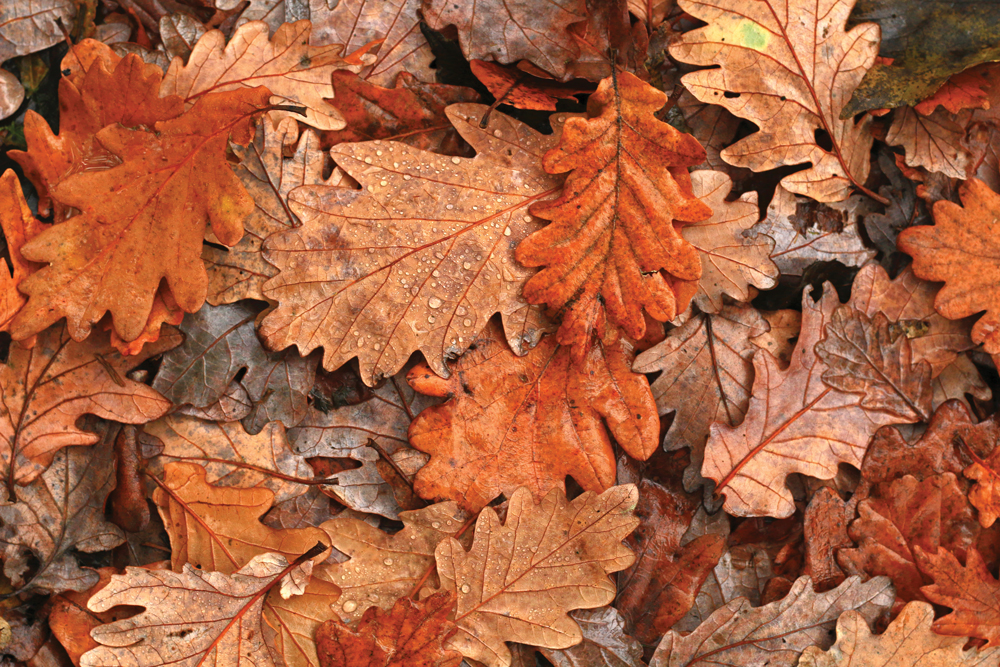
Missouri Forests Are at a Crossroads
October 6, 2023
Written By Adam Buckallew
The dense forest at Rock Bridge Memorial State Park outside of Columbia, Mo., is peaceful and beautiful. The woods are filled with sights of awe-inducing natural wonder. One thing about the forest is a bit worrisome, though, and it’s a shared concern for more than 60% of Missouri forests—it’s getting old. And with advancing age comes mortality concerns.
“Trees don’t live forever as much as we might hope they would,” said Robbie Doerhoff, a forest entomologist with the Missouri Department of Conservation (MDC). “The closer trees get to the end of their lives, the more susceptible they become to health issues.”
Woodlands throughout the state are filled with mature oak and hickory trees. Red oak group trees like black and scarlet oak begin declining around 70 to 90 years of age, while longer-lived white oaks have lifespans upwards of 150 years. Hickory trees, like pignut or shagbark, and Missouri’s only native pine, the shortleaf, could live up to 200 years.
Doerhoff paused when asked if the state’s forests are in good health.
“That’s a tough question,” she said. “Our forests are becoming older. The droughts and extreme rainfall events we’ve seen in recent years can and will wreak havoc on old trees. It’s an issue for sure.”
Hiking along the park’s Shooting Star Trailhead, Rebecca Blue, an MDC forester, accompanies Doerhoff. The two women scan their surroundings as they make their way along the path, looking for distressed trees while the sound of trilling insects fills the air. Standing on a rocky bluff to survey the verdant forest canopy, Blue points out signs of trouble. Patches of browning leaves and skeletal tree crowns can be seen on a ridge in the distance. It’s early August, too soon for trees to shed their leaves under normal conditions.
“There’s decline out there,” Blue said. “We’re seeing more and more mature oak trees dying.”
Oaks in Decline
The phenomenon Blue described is known as oak decline, a slow-acting insect and disease complex occurring in mature red and black oak species.
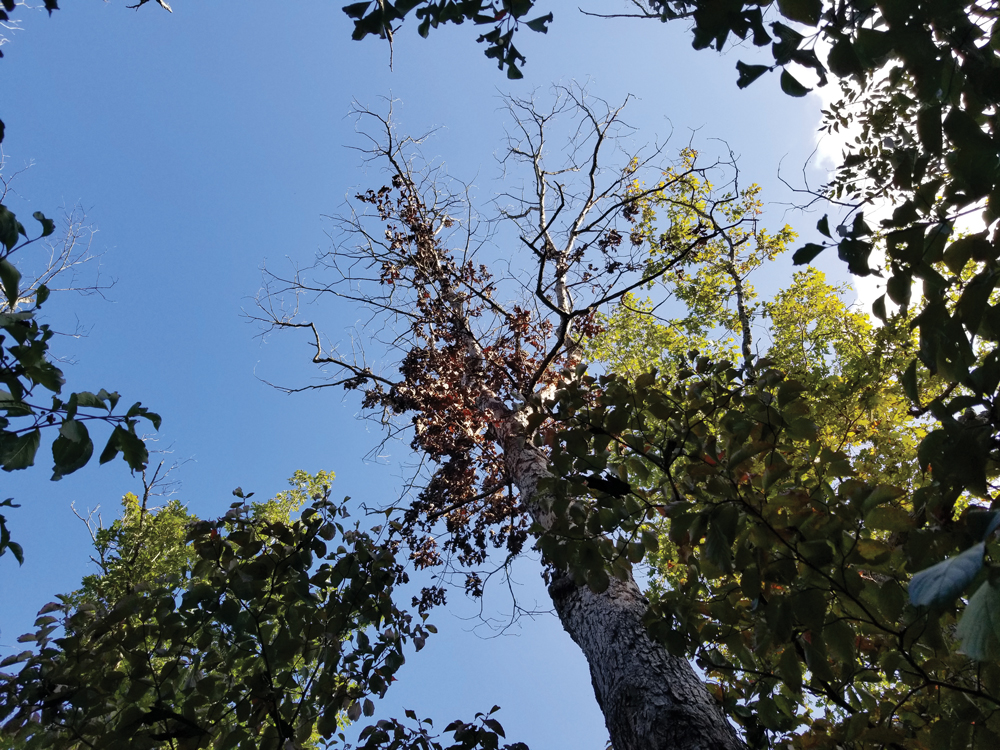
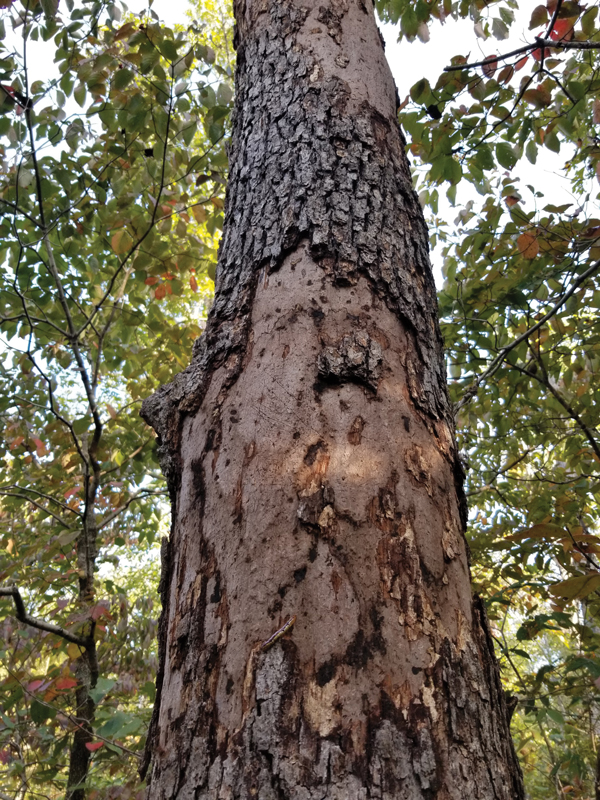
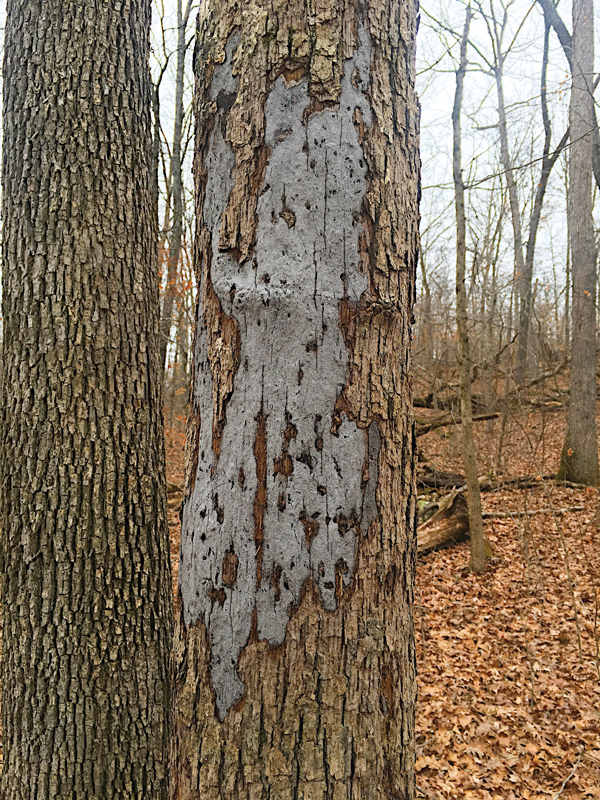
Many factors cause oak decline, but it is relatively easy to understand. It begins with a predisposing situation like overly mature trees on dry, rocky sites and is set off by inciting events such as extreme droughts, ice storms or spring freezes. Once these older trees are stressed to a tipping point, they become highly susceptible to diseases such as Armillaria root rot and damage from insects like carpenterworm and red oak borers. These native organisms play essential roles as decomposers of dying trees and do not pose a threat to vigorous, healthy trees.
For decades, large numbers of northern red, southern red, black and scarlet oaks have been dying throughout southern Missouri and northern Arkansas. The die-off is strongly tied to European settlers’ large-scale burning and land clearing from 1880 to 1920. The settlers used repeated burnings so often that they changed the composition of forests in the region, which are now dominated by fire-resistant trees in the red oak species group. Large populations of those red oaks are nearing the end of their lifespans.
Weather events such as the 2007 spring ice storm and the drought of 2012 pushed a significant number of red oaks into decline.
“My family has a farm in southwest Missouri, and we got hammered by that 2007 ice storm,” Doerhoff recalled. “Many of our old black oaks lost big branches, which is hard on aging trees. But it took a good ten years for some of them to die. Trees grow slowly, but they often die slowly, too.”
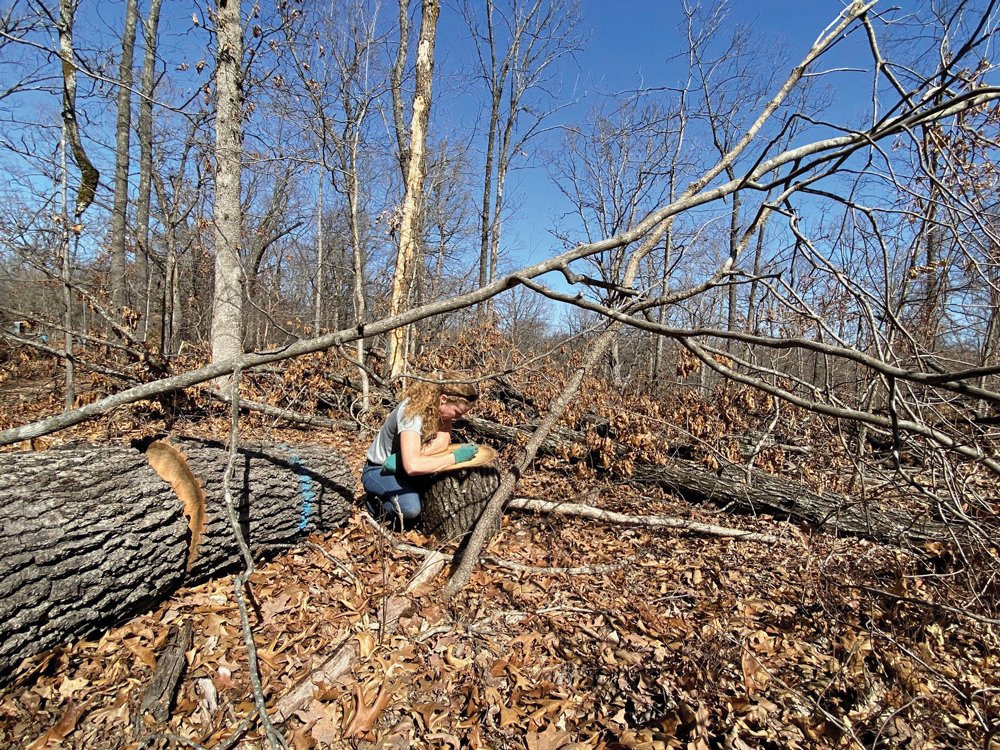
Oak decline is among Missouri landowners’ most common issues in their forests. Oaks in severe decline are often easily identified by large dead branches, numerous trunk sprouts and insect borer damage.
“People come across a bunch of dead trees in a particular area and get worried,” Doerhoff said. “We assure them that what they are seeing is a natural process and advise them that they are going to have to do some management of their woods to get ahead of it or get past it.”
Forests Need Management
Approximately 15.4 million acres of the state are covered by forest, a land mass equivalent to the state of West Virginia. Missouri forests generate $10 billion in annual revenue for the economy while providing clean air and water, high-quality wildlife habitat, and recreational opportunities. These woodlands are incredibly valuable but are also increasingly imperiled by existing and emerging insects and diseases, an ever-growing list of invasive species, and other dangers.
Perhaps the most pressing threat facing the state’s forests is that they are “often misunderstood, mismanaged or taken for granted,” as Lisa Allen, the state’s former chief forester, wrote in 2014. Unfortunately, that assessment still holds.
Private landowners may assume the best way to care for their woods is to leave them alone. Doerhoff said that’s the wrong approach.
“That sentiment is something we frequently encounter with private landowners,” she said. “People who own forest land may want to support wildlife, have a timber harvest at some point, or simply preserve the land for their kids. But if they don’t start acting on those goals now, they will never achieve them.”
Missouri’s aging forests have also caused concern for wildlife species relying on young forest habitats. MDC has observed bird populations declining due to the lack of early forest habitat. Even turkeys and whip-poor-wills have been impacted.
Blue worries that inaction is increasingly putting the future of the state’s forests at risk.
“You’ve got to do something,” she said. “Too many landowners are doing nothing.”
That’s a huge issue, considering 81% of Missouri forests are controlled by private landowners, many of whom have little or no forest management knowledge.
According to the USDA Forest Service, few private landowners in Missouri–only 16% of those with 10 acres or more–have received advice on forest management. Fewer still–less than 5%–have a written plan they follow.
Help is Available
MDC offers a variety of programs, many of which are free, to private landowners to assist with forest management. Whether scheduling a visit from a private land forester, creating stewardship plans, or assisting with federal or state cost-share program applications, Blue wants people to know MDC can help.
“If you’ve never talked to someone about the management of forests on your land, please reach out to us,” Blue said. “We have foresters available throughout the state to offer technical assistance. It’s important to have a professional inspect your land, especially if you are considering doing anything drastic.”
Landowners interested in caring for their woods can greatly benefit from working with a forester to help with the process. Foresters can assist with various activities ranging from tree planting, control of invasive species, thinning woods, managing crop trees, conducting harvests, and establishing the next forest.
Though much of the focus of active forest management is on long-term sustainability, Doerhoff said several short-term benefits can be realized in just a few years.
“If you thin out overcrowded areas in your forest, you may see more wildflowers on the forest floor. You should see more oak regeneration, and more browse will be available for wildlife like deer. Quite a bit of positive change can occur in a short period of time.”
Blue recommends landowners walk their woods at least twice a year to scan for potential issues. Spring and fall, when invasive plants are most likely to stand out from natives, are ideal times to check a forest’s health.
She also strongly encourages forest owners to phone the state’s Call Before You Cut hotline for advice before allowing a logger to harvest trees. The sale of timber can be an excellent tool for sustainably managing forests when done thoughtfully.
“Timber sales can be good for owners and the forest, but they can also be done in the wrong places at the wrong times,” Doerhoff said. “You need to be cautious about the logger you choose and the trees you allow them to cut. There also needs to be a plan in place to manage invasive plants before and after a harvest. You can wreck your woods if you aren’t careful.”
Protecting Future Forests
Getting landowners to invest their time, effort and money into managing their woods is more important than ever. The consequences of poor forest management are too dire and widespread to ignore.
While the advancing age of the state’s forests is a growing concern, there is still time for landowners to take on the role of forest stewards. Forestry and natural resources experts are available to create sustainable management plans so that future generations can enjoy the priceless benefits forests provide.
“Forest management is pretty altruistic,” Blue said. “It’s not for me. It’s not really for you. It’s for our kids and the generations that will come after them. If you want them to enjoy the forests we have now, you’ve got to manage it.”
Though the needs and expectations of private landowners may differ widely, they all share one thing in common: responsibility for the future of Missouri forests.
Forest Best Management Practices
Develop a plan
Healthy woods start with a plan. Developing a forest management plan helps landowners understand what they have, what they want and the practices they will need to employ to meet their goals.
Maintain diversity
Healthy forests have a mix of tree species, ages and sizes. Foresters recommend stocking no more than 25% of any single species. The conservation department and consulting foresters are available to help landowners determine the species best suited for their property and aspirations.
Right species, right place
Trees survive and grow best when planted in conditions similar to those where they occur naturally. For example, shortleaf pine and post oaks do well on dry, upland sites in the Ozarks, while white oak may be appropriate for north-facing slopes.
Thin to win
Regular thinning helps maintain the health and vigor of forest trees. Removing undesirable trees reduces competition for light and water. The remaining trees will live longer, provide greater wildlife food value and produce higher-quality lumber when mature.
Protect den trees and snags
Retaining snags (dead or partially dead standing trees) and den trees (live trees with existing cavities) helps maintain woodland wildlife populations.
Walk your woods
Forests should be examined periodically to check for tree pests and invasive plant species. Scouting during the spring and fall is recommended.

